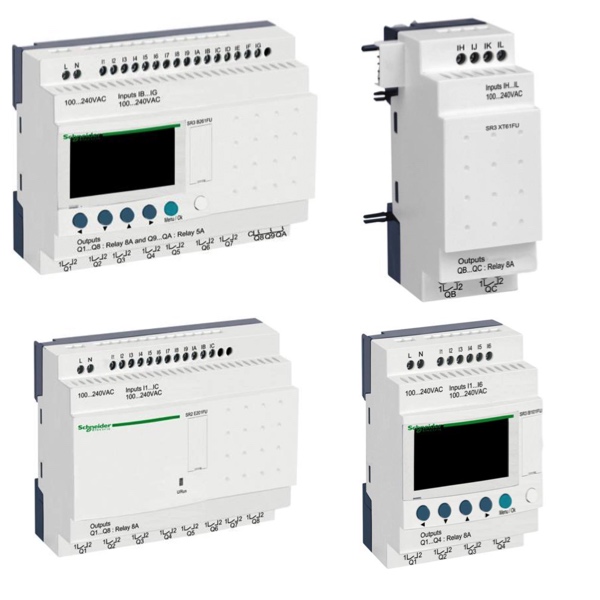Smart Relays

Smart relays have significantly evolved in the realm of home automation and industrial control. They're essentially compact devices that combine the functionalities of relays and programmable logic controllers, offering more features than a simple relay switch. These smart relays are ideal solutions for controlling various aspects of your home or facility, from lighting to ventilation systems.
Smart relays offer an array of monitoring applications. They can prevent electrical faults by detecting anomalies in voltage and power consumption and taking immediate action. If you have a more complex set-up, such as access control or advanced lighting configurations, smart relays with expandable CPU houses can provide optional expansion features for monitoring and control.
Some smart relays are compatible with other smart relays and other devices in a connected environment, offering you the advantage of integrated solutions. For instance, you can link a smart relay that controls your light switch with another that controls your ventilation systems, so they work in tandem based on, say, a real-time clock or sensors that detect occupancy.
More Information about Smart Relays
For example, in a smart home system, you can install a smart relay switch to remotely control a wall switch for your lights. The relay can be connected to smart devices and managed through a smartphone app, allowing you to switch your lights on or off from anywhere. This is an ideal solution for energy-saving and security purposes. Smart relay switches can also replace multiple timers that you might use for scheduling lights to turn on or off at specific times.
Installing smart relays generally requires a live wire and sometimes a neutral wire. These can be added to existing wall switches, often with easy installation steps. Their compact form factor means they can be installed directly inside the wall switch box, leaving your existing light switch in place if you prefer.
Even smart bulbs can be controlled using smart relays, allowing you to enhance your home automation further. However, it's worth noting that there are a few disadvantages when using smart relays for smart bulbs, such as the potential for compatibility issues and the inability to use some advanced smart bulb features like color changing.
For users looking for a more robust solution, Z-Wave or other advanced communication protocols can be utilized to connect smart relays in a mesh network, offering more reliable connection and control. This also provides an opportunity for users to scale their automation or monitoring systems as their needs grow.
What is Relay Logic?
Relay logic consists of relays wired to perform various switching operations for one or several different electrical circuits.
Relay logic circuits use a combination of relays and other components such as switches, motors, timers, actuators, contactors, lights and many other types of electrical hardware. Relay logic control can perform basic on/off functionality as well as very complex control tasks depending on how many relays are used and the configuration of the wiring.
Relay logic uses different parts of the relays for different functions.
For example, the coil portion of the relay can be used as a discrete input point. When the coil receives voltage, it performs a switching operation. Depending on the relay, this could mean the relay switches just one circuit or possibly many circuits. This switching can then control other relay coil inputs or it could turn on a light or motor. It all depends on the need of the control circuit.
Power in relay logic systems has to be provided to each relay in the system.
Unlike PLC's, which might only use one common power input and can read and actuate many other inputs and outputs, relay logic requires power to each relay in order to function properly. For example, in order for a relay to actuate properly, power needs to be provided to the coil and to the switching portion of the relay.

